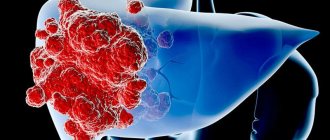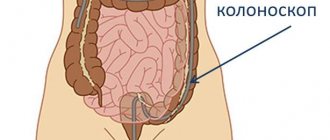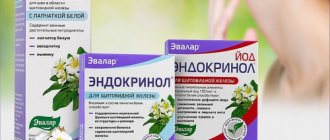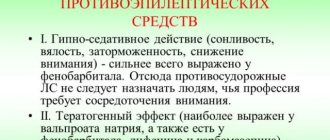This disease is treated by a Dermatologist / Infectious disease specialist / Neurologist / Oncologist / Dentist
Need more information?
Thank you for your request. Your application is accepted. Our specialist will contact you shortly
Need more information?
Did not find an answer to your question?
Leave a request and our specialists will advise you.
Thank you for your request. Your application is accepted. Our specialist will contact you shortly
By clicking on the button, you consent to the processing of your personal data
Thank you for your request. Your application is accepted. Our specialist will contact you shortly
Epstein-Barr virus is a human herpes virus type 4, which is considered the main culprit in the development of infectious mononucleosis and tumors, in particular Burkitt's lymphoma. This is the most widespread virus on the planet, carriage reaches 95% among the world's population.
How does a virus become infected?
The content of the article
Epstein-Barr virus is transmitted:
- The traditional contact route is through direct contact with saliva (it’s not for nothing that infectious mononucleosis is also called the “kissing disease”).
- Through objects that have been exposed to saliva, for example, in children's institutions - through toys and other objects if the rules for handling and washing them are not followed.
- Sometimes infection can occur through a transfusion of infected blood.
In the human body, the pathogen penetrates the mucous membranes of the oropharynx, where it multiplies vigorously, causing inflammation. It then enters the bloodstream and travels through the lymph flow to regional lymph nodes, affecting B lymphocytes and dendritic cells, causing inflammation and hyperplasia. Later, viremia occurs with the development of generalized (general) damage to the lymphatic system and internal organs.
Description of the disease
The virus was discovered in the middle of the last century, and over the intervening time the pathological role of the pathogen has been proven in many infections.
It is transmitted from a sick person to a healthy person through biological fluids: blood, sweat, saliva, urine, tears, pathological secretions. By adolescence, about half of adolescents become carriers, and among adults there are no more than 5% of people whose bodies are free from the virus. The virus settles in the nervous tissue and does not leave it until the end of life, being in a dormant state. With any weakening of the immune system or exposure to harmful factors, the virus becomes the cause of the following diseases:
- Filatov's disease, or infectious mononucleosis;
- chronic fatigue syndrome;
- Burkitt's lymphoma;
- lymphogranulomatosis;
- nasopharyngeal cancer (carcinoma);
- hepatitis;
- stomatitis;
- herpetic lesions of the skin and mucous membranes;
- violation of the body diagram, Alice in Wonderland syndrome;
- multiple sclerosis;
- hypothyroidism;
- lesions of the mucous membrane of the tongue in the form of hairy leukoplakia in patients with AIDS.
Diseases and complications caused by the Epstein-Barr virus
When this pathogen enters the human body, it causes infectious mononucleosis - a contagious disease accompanied by fever, rash, general serious condition, significant enlargement of lymph nodes, damage to internal organs and a long course.
With a favorable outcome, immunity arises and a period of convalescence begins with a gradual fading of symptoms. Otherwise, the disease can become chronic, accompanied by carriage and erased symptoms. This option is unfavorable, since due to chronic infection the virus can cause Burkett lymphoma, nasopharyngeal carcinoma, herpes and other infections. When developing into a viromethic complication, this infectious agent causes damage to the central nervous system, internal organs and destroys brain cells.
Treatment of EBV infection
Currently, there are no generally accepted treatment regimens for EBV infection. The volume of therapy for patients with both acute and chronic active EBV infection may vary, depending on the duration of the disease, the severity of the condition and immune disorders. In the complex treatment of this disease, various groups of drugs are used, including recombinant interferons, which suppress the reproduction of the virus, protect uninfected cells, and strengthen the immune system. In addition, acyclic synthetic nucleosides and other antiviral drugs are used to stop virus replication in the affected cells, as well as glucocorticoids, the action of which is aimed at stopping inflammatory processes in organs and tissues. Depending on the severity of certain symptoms of the disease, various symptomatic therapy is prescribed (analgesics, antioxidants, non-steroidal anti-inflammatory drugs, mucolytics, etc.).
When and why is an Epstein-Barr virus test performed?
A dermatologist, oncologist, endocrinologist or therapist will refer you for analysis.
The pathogen causes diseases that have a very diverse clinical picture and are poorly diagnosed. This leads to the fact that the patient is treated for something completely different from the pathology that he has. In addition, there is also asymptomatic virus carriage, in which a person does not know that he is sick until this leads to the development of cancer.
To identify this infectious agent in the body, an Epstein-Barr virus test is performed, which helps to carry out differential diagnosis if pathology is suspected.
Indications for research:
- Diagnosis of infectious mononucleosis in the case of sluggish long-term tonsillitis and unmotivated enlargement of lymph nodes.
- Diagnosis of the stages of the disease in infectious mononucleosis.
- Determining the effectiveness of treatment for EBV infection.
- Detection of antibodies to the virus during fever, swollen lymph nodes and sore throat that occur after blood transfusion and tissue transplantation from a donor.
- Differential diagnosis of herpetic infections.
- Suspicion of Burkett's lymphoma in patients arriving from the area where this disease is widespread.
- Diagnosis of neoplasms in HIV-infected patients.
Prevention measures
Given the prevalence of EBV and the ease of its transmission, it is extremely difficult to protect yourself from infection.
Doctors around the world are faced with the task of inventing prophylactic agents to combat this virus, since it is a provoking factor in the development of cancer and other dangerous diseases.
Many scientific research centers are now conducting clinical trials on this issue. It is impossible to protect yourself from infection, but you can get by with minimal consequences if you have a strong body.
Therefore, EBV prevention measures are aimed at generally strengthening the protective functions of the human body:
- Compliance with sleep and nutrition;
- A healthy lifestyle with the exclusion of all bad habits;
- Sufficient rest;
- Maintaining personal hygiene;
- Sufficient exposure to fresh air;
- Moderate and sufficient physical activity;
- Hardening;
- A complete diet with sufficient vitamins and minerals. Taking vitamin complexes;
- Timely and adequate treatment of existing diseases.
Types of tests for Epstein-Barr virus
These biochemical and molecular studies can detect antibodies to Epstein-Barr virus DNA (EBV, Epstein-Barr virus DNA) in the patient’s blood:
- Real-time PCR reaction (Epstein Barr Virus, DNA real-time PCR) - the result can be positive or negative. It is carried out throughout the entire period of treatment of diseases caused by the pathogen.
- VCA reaction to IgM capsid protein
(Epstein Barr Virus capsid protein (VCA), IgM) is carried out in the early stages of infectious mononucleosis. - EA - reaction to early antigens IgG
(Epstein Barr Virus early antigens (EA), IgG is carried out for the differential diagnosis of infections similar to infectious mononucleosis. - Quantitative reaction to nuclear antigen
(Epstein Barr Virus nuclear antigen (EBNA), IgG positivity rate).
If the test results go beyond the permissible reference (acceptable, normal) values, this means that the study needs to be repeated after 14 days. If pathogen DNA is detected, a repeat analysis is carried out after 30 days to determine the dynamics of treatment.
Since Paul-Bunnel antibodies are formed in the body during infectious mononucleosis, one of the types of laboratory diagnosis of the virus is based on their detection. In addition, the MFA method determines antibodies to the viral envelope antigen:
- A high titer of IgM antibodies indicates a recent infection, since this indicator is maximum two weeks after the onset of the disease, and then it decreases.
- An increase in IgG titer indicates the beginning of the period of convalescence. The rate may remain quite high for some time after recovery.
- Anti-EBNA IgG appears almost after recovery, and can be in the body even several years after the infection. Their appearance in the blood of a person who is still sick indicates the subsidence of the acute phase and the beginning of the recovery period.
Laboratory research
Considering that it is impossible to make a clinical diagnosis of EBV infection, laboratory diagnostic methods are leading in determining the disease.
They can be divided into two groups: screening and clarifying:
1. Screening tests include those that, along with clinical symptoms, allow one to suspect EBV infection. In a clinical blood test: slight leukocytosis, lymphomonocytosis, possibly thrombocytopenia may be observed. A biochemical blood test reveals: increased levels of transaminases and other enzymes, acute phase proteins - C-reactive protein, fibrinogen, etc. However, these changes are not strictly specific to EBV infection (they can also be detected in other viral infections).
2. An important study to determine the presence of a pathogen in the body is a serological examination: an increase in titers of antibodies to EBV is a criterion for the presence of an infectious process at the present time or evidence of contact with an infection in the past. However, the presence of antibodies does not allow us to say unambiguously that the clinical manifestations of the disease are caused by EBV.
3. To obtain the most reliable results, DNA diagnostics is used. Using the polymerase chain reaction (PCR) method, EBV DNA is determined in various biological materials: saliva, blood serum, leukocytes and peripheral blood lymphocytes. If necessary, research is carried out in biopsy samples of the liver, lymph nodes, intestinal mucosa, etc. Thus, to make a diagnosis of EBV infection, in addition to general clinical examinations, serological tests (ELISA) and DNA diagnostics of infection in various materials over time are necessary.
Preparation for analysis
No special preparation is required to conduct research. Before collecting biomaterial, you should not smoke for 30 minutes. It is advisable to conduct the study on an empty stomach, in the morning.
Detection of antibodies to pathogen DNA in synovial fluid, biopsy and cerebrospinal fluid is carried out in the case of local lesions of organs and joints and is done by examining the corresponding fluids in the laboratory.
Before testing, pregnant women are screened for toxoplasmosis to exclude a false-positive reaction.
What helps increase the number of immune CD8+ T cells
- Resistant starch Experiments have shown that when the number of CD8+ T cells decreases during chronic viral infection, their number can be restored after receiving butyrate . This leads to an increase in the number of CD8+ T cells and mimics the effect of the proinflammatory cytokines IL-12 and interferon-alpha (IFN-α), which also increases CD8+ T cell activation and memory. []
- Astragalus (plant). []
- Andrographis paniculata (plant). Experiments have shown that andrographis contributed to an increase in the level of immune cells CD4+ (by 40-61%), CD8+ (by 23-31%) and CD56 (by 2-3%).
- Gynostemma pentafolia (plant). []
- Schisandra (plant). Prevents CD8+ decline from radiation. []
- Ashwagandha (plant). []
- Thymus glandular (extract)
- Glandular spleen (extract)
- Massotherapy []
- Aldosterone (hormone). However, its increased production may contribute to the worsening of autoimmune disease through the growth of Th17 immune cells. []
SCHEME OF DIVISION OF NAIVE T-CELLS INTO TH1 and TH17 (inflammatory) and TH2 and T0REG (anti-inflammatory)
Decoding the test for detection of the Epstein-Barr virus
The information content of the studies conducted on the presence of this pathogen is quite high. But if there is any other viral pathology, it is necessary to first carry out a number of additional diagnostic measures for the presence of the most likely pathogens in the body, and when taking an analysis during pregnancy, for toxoplasmosis, in order to understand the reasons for possible distortion of the results.
Reference values for research indicators for Epstein-Barr virus
| Name of the study | Index | Meaning | Note |
| Epstein Barr Virus, DNA real-time PCR | negative | Informative for the entire time the virus is in the body | |
| Epstein Barr Virus capsid protein (VCA) | signal/cutoff ratio | 0 – 0,9 | With recent infection, the excess of the norm is maximum |
| Epstein Barr Virus early antigens (EA), IgG | positivity rate | 0 – 0,99 | Most effective at the onset of the disease |
| Epstein Barr Virus nuclear antigen (EBNA) | positivity rate | 0 – 0,79 | The increased rate may persist for a long time after recovery. |
General doctor's recommendations
It is important to remember that, in addition to drug treatment, you must follow other doctor's recommendations. The patient must make every effort to relieve symptoms and recover.
In particular, basic rules of personal hygiene should be observed. The disease often manifests itself in the form of skin rashes, so you should not touch the affected areas with your hands. However, if contact with these areas does occur, then you must wash your hands thoroughly afterwards. Ointment or other medicine should be applied to the rash with special sticks.
To prevent sexual transmission (this is how cytomegalovirus is transmitted), you need to use traditional methods of contraception - condoms. But you must always remember that they do not provide a 100% guarantee of protection. At the same time, the pathogen is transmitted through unprotected areas of the body.
It is necessary to lead a healthy lifestyle. If there are bad habits, they need to be eradicated. In addition, moderate physical activity is beneficial, and it is important to eat right. Patients are recommended to get a full eight hours of sleep. They should also avoid stressful situations and emotional stress.
Many factors contribute to the activation of a viral infection. First of all, this is hypothermia and even a common cold. In this case, you should be extremely careful. For example, avoid contact with sick people, take vitamin complexes, as well as drugs that stimulate the immune system, but they should only be used with the permission of a doctor.
Laboratory indicators for EBV
As can be seen from the table, different studies need to be carried out at different stages of the disease, so patients have to be examined several times during the course of the disease.
| № | Period of illness | VCA to IgM | EA to IgG | EBNA to IgG | Real-time PCR |
| 1 | Incubation | neg. | neg. | neg. | neg. |
| 2 | Beginning of primary infection | floor. | neg. | neg. | gender/neg. |
| 3 | Primary infection in the early stages | floor. | floor. | neg. | gender/neg. |
| 4 | The height of the illness and the period of convalescence | gender/neg. | floor. | gender/neg. | floor. |
| 5 | Atypical form | neg. | neg. | floor. | floor. |
| 6 | Chronic infection and carriage | gender/neg. | floor. | neg. | floor. |
| 7 | Remote time after the onset of the disease | neg. | floor. | floor. | neg. |
| 9 | Reactivation | floor. | floor. | floor. | floor. |
If there are some other pathogens in the body, this analysis can be false positive, for this reason, in this case, patients are prescribed additional examinations.
Interferon-stimulating Cycloferon
The drug, which has been well studied in the clinical sphere, is used for all forms of infectious mononucleosis caused by EBV. The effectiveness of the drug is caused by a wide range of biological actions:
- Antiproliferative
- Antiviral
- Antichlamydial
- Prevents the formation of tumor processes
- Immunomodulatory.
The drug can be used by children aged 4 years and older. Before use, you should familiarize yourself with the content of contraindications and adverse reactions.
Detailed instructions are available at the link: Method of use and dosage of Cycloferon in ampoules, tablets and liniment
False positive and false negative results
Unfortunately, “entering” the reference indicators does not always mean that the pathogen is absent from the body. In the early stages of the disease, its amount may simply be very small and give a false negative result. Sometimes during this period the indicator slightly exceeds the norm and is considered doubtful. In such cases, a repeat study is carried out after 14 days. Only then can it be decided whether a person really does not have the Epstein-Barr virus in his body.
A false positive result can be given by the presence of some other pathogens in the body, for example, herpes virus type 6, cytomegalovirus or HIV.
Distortion of test results can occur due to carelessness or poor quality of reagents. Since this laboratory test requires certain qualified personnel and modern equipment, to carry out such analyzes you should contact reputable laboratories to be sure of the accuracy of the results obtained.
You can get tested for the Epstein-Barr virus in St. Petersburg at our clinic. We work with modern Helix laboratories, so accurate results are guaranteed.
CLICK TO SIGN UP
If you find an error, please select a piece of text and press Ctrl+Enter
Acyclovir for children
The drug can easily be called the ancestor of antiviral drugs, which are still actively used. Acyclovir's popularity comes from the fact that it is sold without a prescription. This emphasizes its accessibility and safety. Acyclovir slows down the process of viral DNA formation and helps fight bacterial infection. It is quite advisable to use the drug for children, but this should only be done with the permission of the attending physician, as there may be side effects. It is strictly forbidden to use a herbal immunomodulator if you have autoimmune diseases.
There are not many medications that act on the infection. Most viruses are monitored by the immune system. The choice of the appropriate drug depends on the body's sensitivity to it, and children should not be given most over-the-counter medications recommended for adults.











